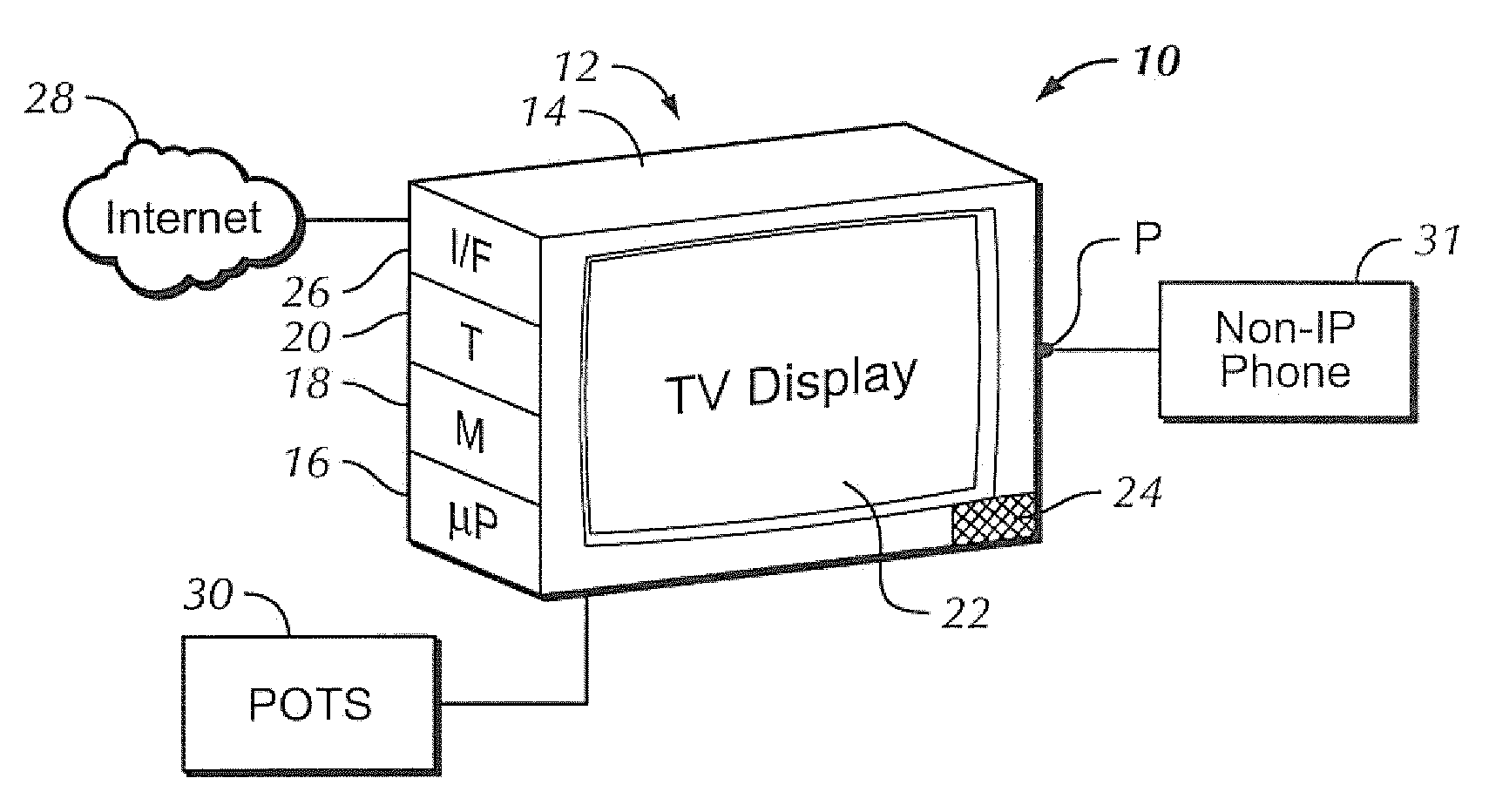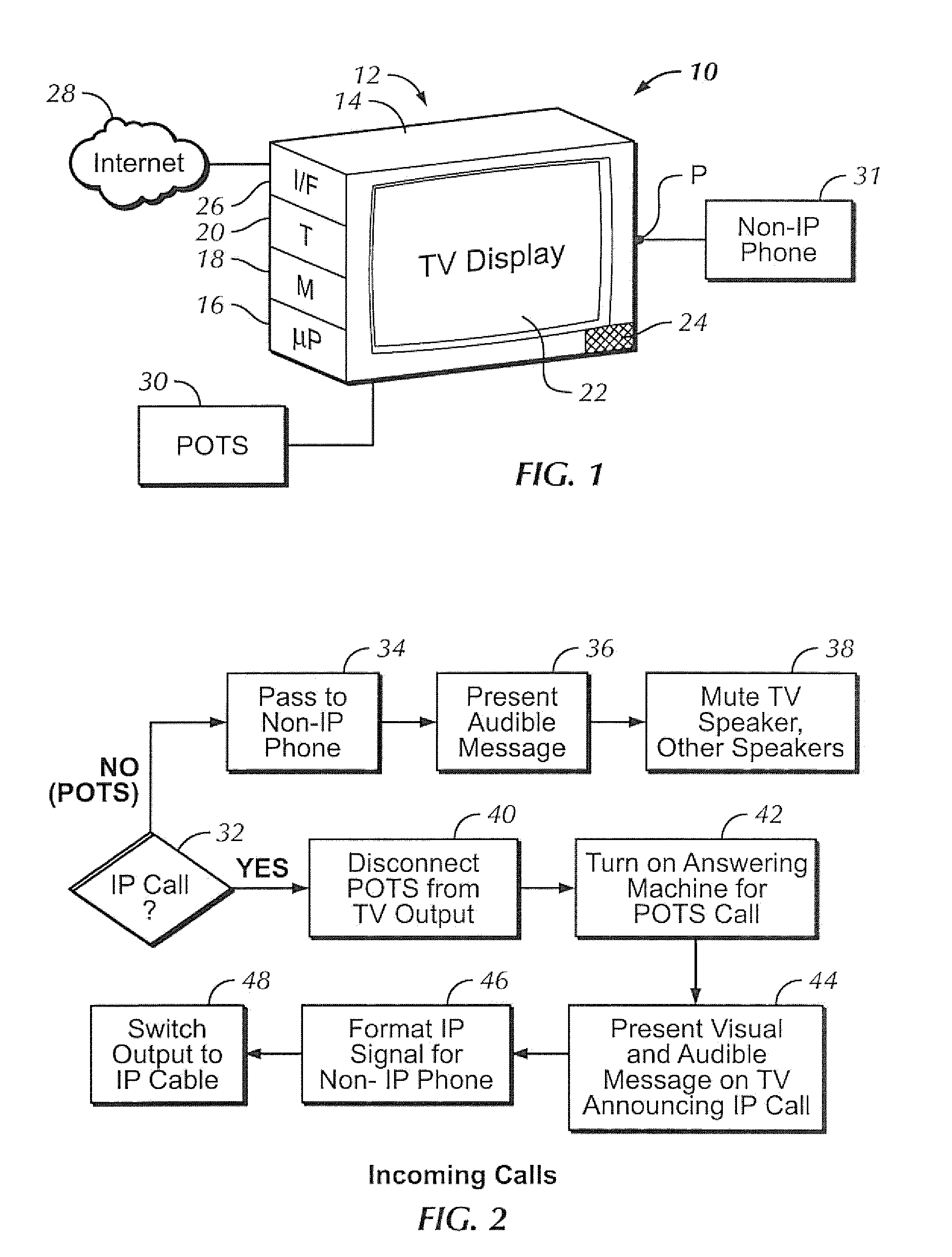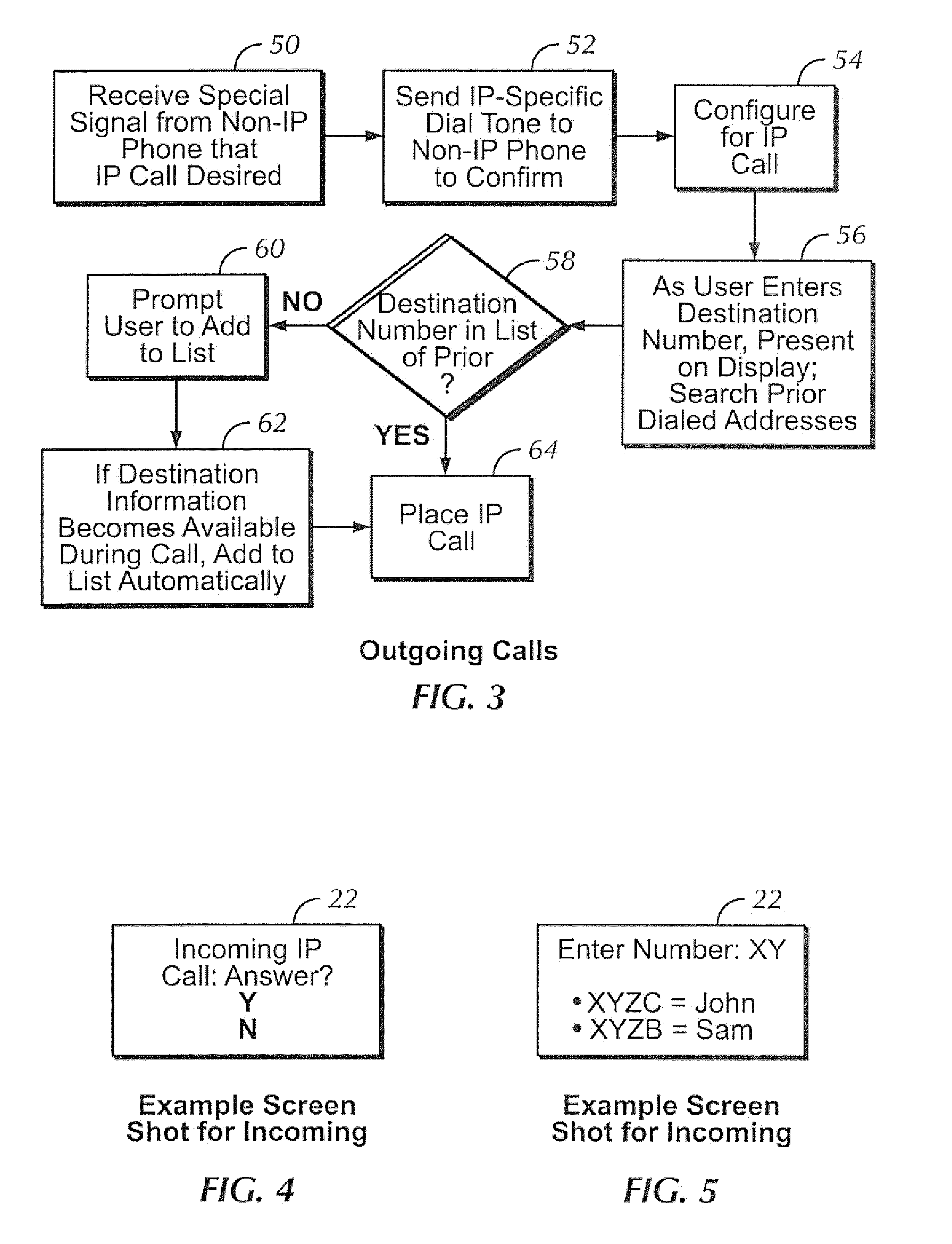TV acting as pots phone switch
- Summary
- Abstract
- Description
- Claims
- Application Information
AI Technical Summary
Benefits of technology
Problems solved by technology
Method used
Image
Examples
Embodiment Construction
[0017]Referring initially to FIG. 1, a system 10 includes a TV 12 defining a TV chassis 14 holding a TV processor 16 accessing a computer readable storage medium 18, such as solid state and / or disk-based storage. The storage medium 18 may store data and software executable by the processor 16 for undertaking all or parts of the logic divulged herein for processing telephone calls. The processor 16 typically communicates with a TV tuner 20 in the chassis 14 for presenting TV signals on a display 22 and speaker(s) 24, it being understood that one or more of the components above may alternatively be incorporated in a set-top box that is separate from the chassis 14. The TV 12 may be an analog and / or digital TV with a flat panel (matrix-type) standard definition and / or high definition (HD) display, although other types of displays may be used.
[0018]As shown in FIG. 1, the TV 12 can also include an Internet interface 26 such as but not limited to a wired or wireless modem for enabling th...
PUM
 Login to View More
Login to View More Abstract
Description
Claims
Application Information
 Login to View More
Login to View More - R&D
- Intellectual Property
- Life Sciences
- Materials
- Tech Scout
- Unparalleled Data Quality
- Higher Quality Content
- 60% Fewer Hallucinations
Browse by: Latest US Patents, China's latest patents, Technical Efficacy Thesaurus, Application Domain, Technology Topic, Popular Technical Reports.
© 2025 PatSnap. All rights reserved.Legal|Privacy policy|Modern Slavery Act Transparency Statement|Sitemap|About US| Contact US: help@patsnap.com



